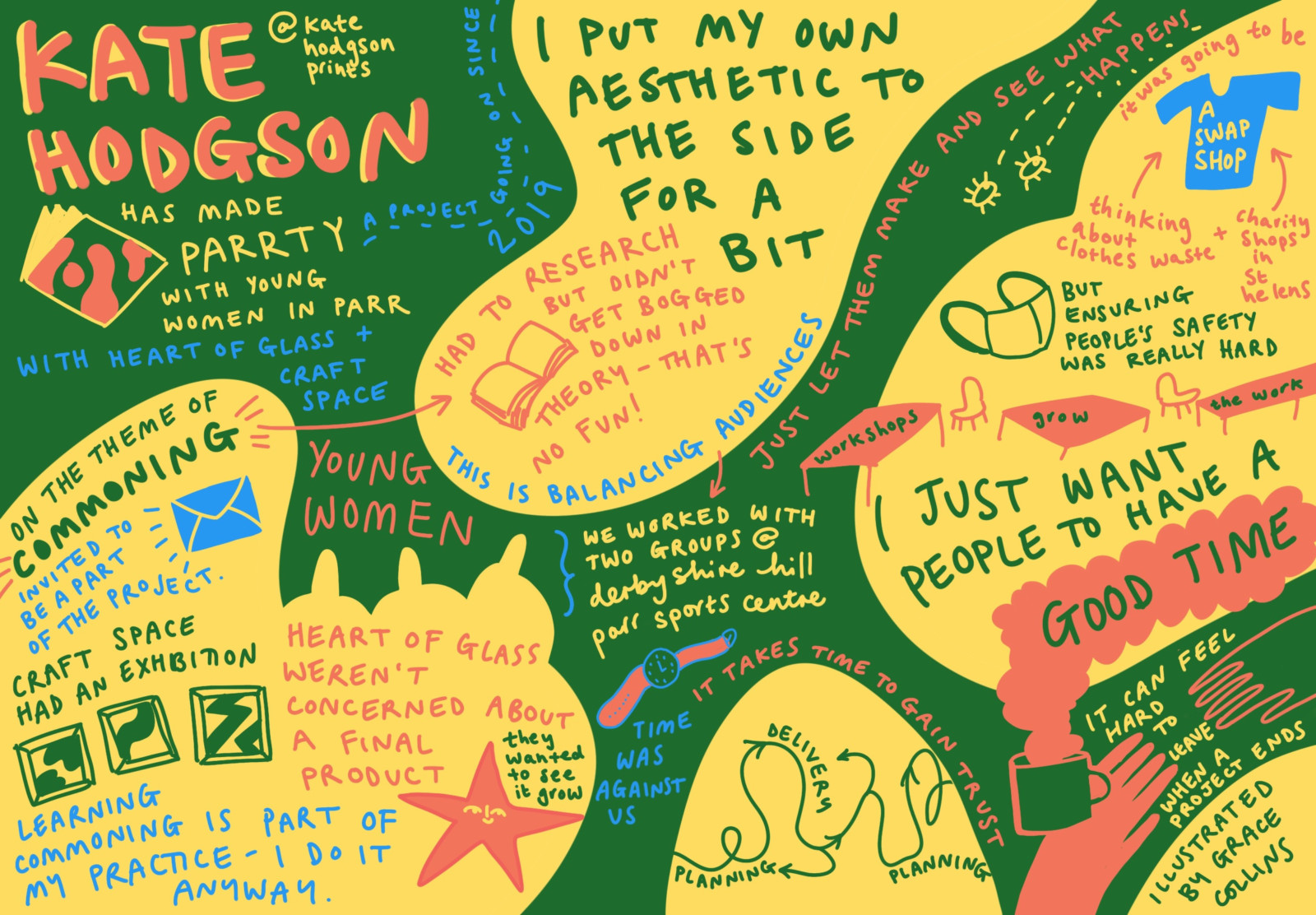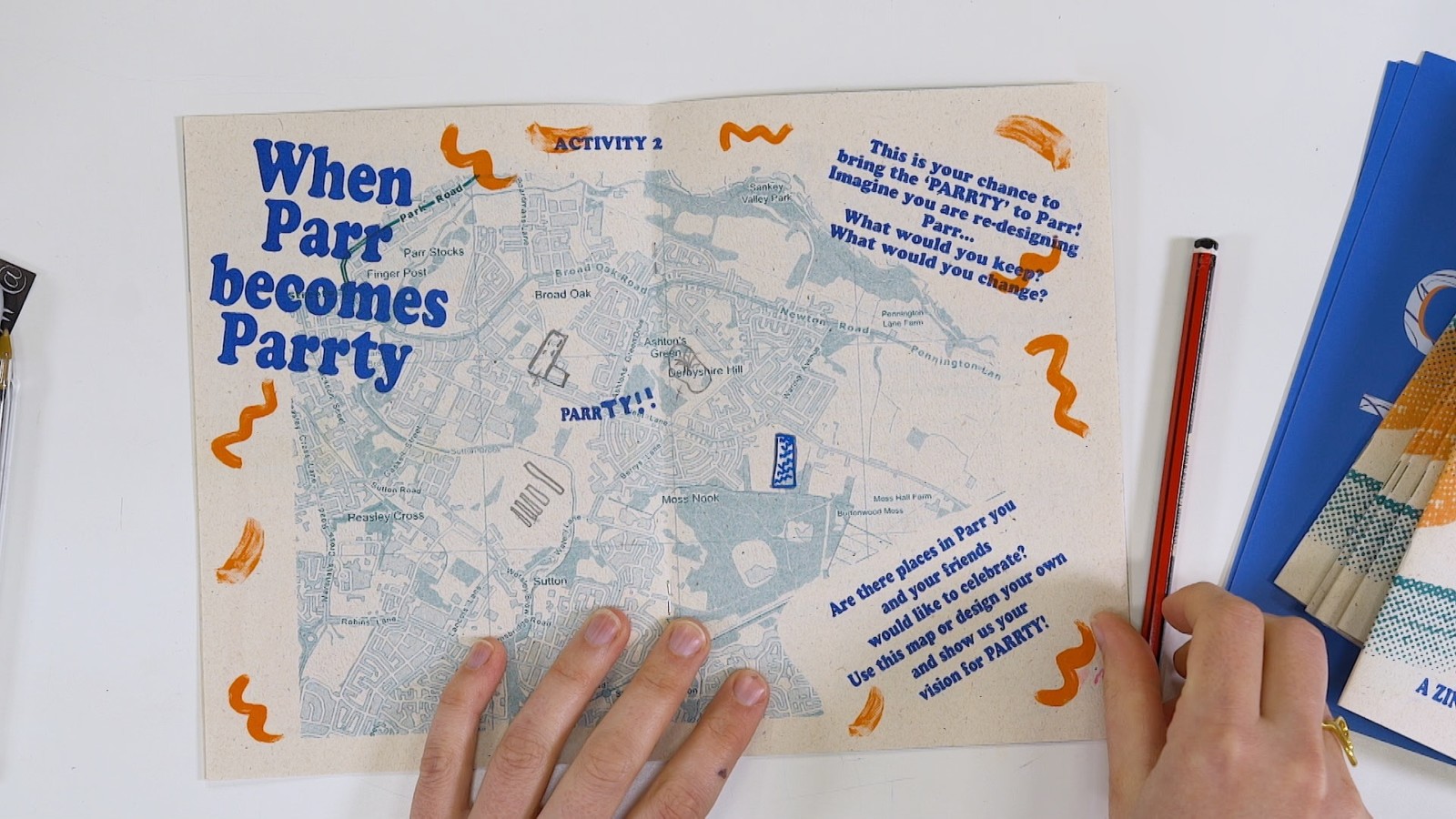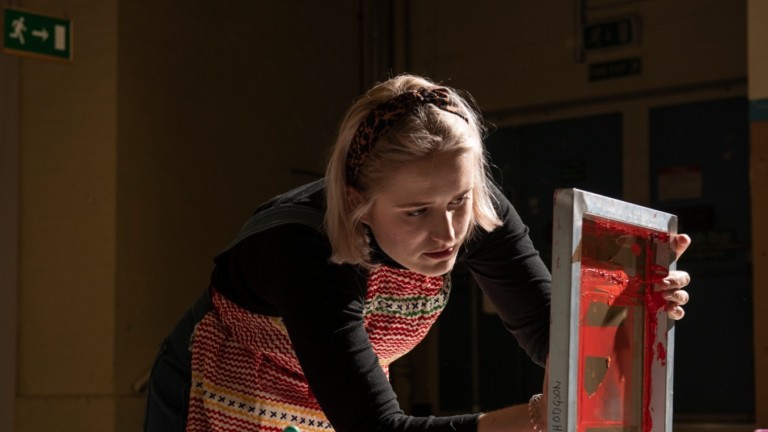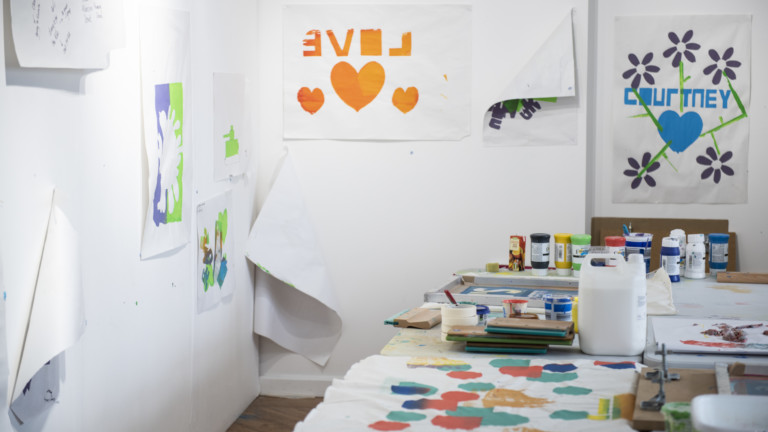Kate Hodgson worked with young women and girls in Parr, to create a collaborative booklet that celebrates Parr in St Helens.
Starting with the idea of a clothing swap shop in 2019 and finishing as a printed zine titled PARRTY three years later, Kate is pleased that the artwork has finally reached the hands of its creators.

"It sometimes takes more time to establish relationships than it does to actually make the work. A lot of meetings we didn't make much, we just drank tea and ate biscuits. I was asking them quite deep questions about their homes and their friends and I didn't feel comfortable to ask those questions until they had more trust in me."
The zine the group created stands alone as an artwork currently circulated among the participants and the places they visit, but it is the relationships that are Kate's focus, “I think, if you've had a meaningful experience with someone, whether they care about the artwork at the end of it or not doesn’t matter.”
This isn’t an unusual standpoint for socially engaged artists, whose key skills are often facilitating and creating trust with individuals and groups. To create a collaborative artwork, the artist often makes ethical, alongside aesthetic, judgement calls: facilitate but don’t teach, lead but don’t guide, stretch but don’t push. Particularly in St Helens (where Kate grew up and revisits with this project) where there is a collective want for sustained social investment.
Kate and I share the fear of letting collaborators down when the final artwork is finally produced and it’s time to move on:
"No matter how long a project is, I always feel like I am within a community and then I’m leaving again. I'm yet to reconcile that with myself and with my practice. I thought because this project was longer, it wouldn’t quite feel that way. But in a way, is it worse because you spent so much time with people."

With moral concerns often close to the centre of making work with people, thoughts on this can seep into non-working hours. I ask Kate what advice she’d go back and give herself in 2019 at the beginning of the project.
"I would probably tell myself that during the lull in activity, just leave it. In the big pandemic gaps, I should have just parked it and not thought about it. I always say this to myself at the start of new projects and never do it: Log your hours. I don't often sit down and spend two hours on my work, I’ll be doing something and then I'll get distracted and start working on something else. I can't count my hours in the way that I could if I went to work and came back."
While an artist may count their hours, set boundaries and do their best to look after themselves, a good relationship with the commissioning organisation goes a long way. On this note, Kate praises Heart of Glass, explaining how the consistency of regular check-ins provides support for both the artist and, in turn, the people that they work with:
"It’s been nice to have a mentor for two years. Normally, you just flip between different producers who have their own practice as well, and it can be hard work getting used to their rhythms. So it’s been refreshing. Maybe artists and producers should pair up all the time! Work as teams! Who would think?!"


 Thought
Thought Long Read
Long Read
